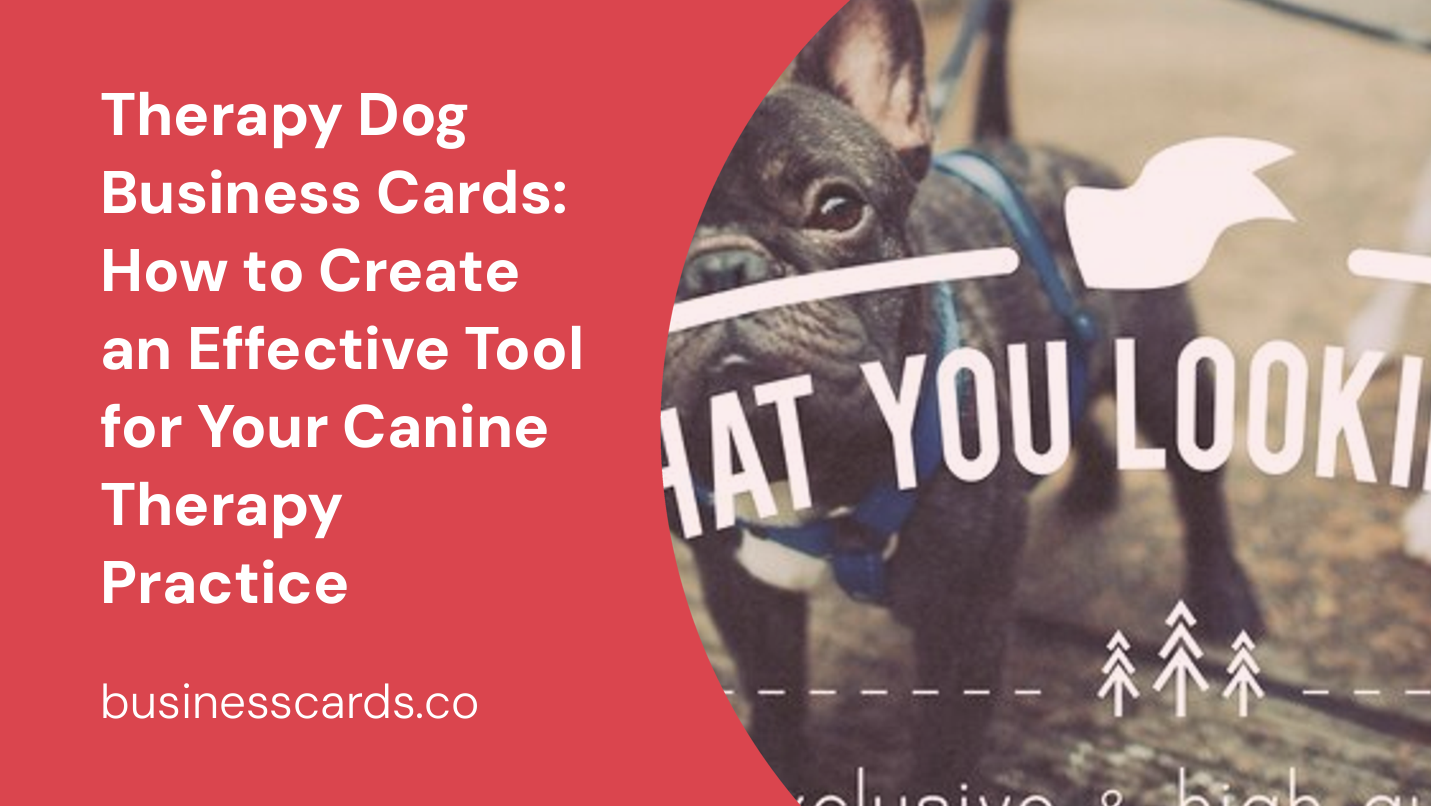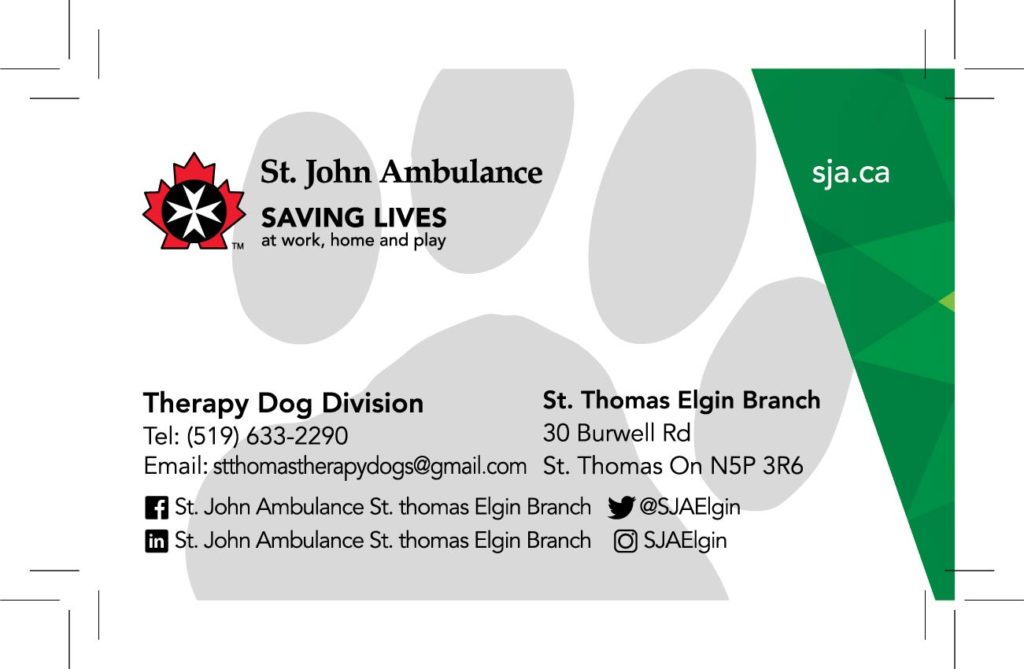
Are you a therapy dog owner or a professional involved in canine therapy? If so, you know the importance of creating a strong and professional brand for your business. One key tool for promoting your services and making a lasting impression on clients is a well-designed therapy dog business card. In this article, we will explore the benefits of using business cards in your therapy dog practice, and provide you with practical tips on creating eye-catching and effective cards.
Why are Therapy Dog Business Cards Essential?
Therapy dog business cards serve as both a promotional tool and a convenient way for clients to remember your contact information. Here are a few reasons why it’s essential to have business cards for your therapy dog practice:
- Professional Image: Business cards give your therapy dog practice a professional and polished look. They convey that you take your services seriously and are dedicated to providing high-quality care.
- Contact Information: Business cards provide clients with a quick and easy way to reach you. By having your contact details readily available, potential clients are more likely to get in touch.
- Word-of-Mouth Marketing: Business cards can be easily shared with others. When clients are impressed by your services, they can pass along your business card to their friends, family, or colleagues, potentially expanding your client base.
- Convenience: Business cards are portable and easily carried in wallets, purses, or pockets. Clients can refer to your information whenever they need it, helping them remember your services and schedule appointments.
Designing Your Therapy Dog Business Card

When designing your therapy dog business card, there are several key elements to consider to ensure it effectively represents your brand and captivates potential clients. Take note of the following design tips:
1. Choose a Professional Style and layout
- Opt for a clean and professional layout that reflects the image of your therapy dog practice. Avoid clutter and choose a design that showcases the key information clearly.
- Select a font that is easy to read but also matches the vibe of your brand. Consider using a font that conveys friendliness and approachability.
- Make use of white space to enhance the overall look of your card and make the information stand out.
- Pro Tip: Avoid using too many colors or complex patterns. A simple, well-designed card is more likely to make a lasting impression.
2. Include Essential Information
- Include your full name or the name of your therapy dog practice. This helps potential clients remember who you are and allows for easy identification.
- Add your professional title, such as “Certified Therapy Dog Handler” or “Canine Therapist.” This can instill trust and confidence in potential clients.
- Clearly display your contact information, including your phone number, email address, and website. Consider adding social media handles if you actively use platforms like Instagram or Facebook to promote your services.
- Pro Tip: Ensure your contact information is up to date and accessible. Double-check for any typos or errors before printing.
3. Utilize Visual Elements
- Incorporate images of therapy dogs or dog-related graphics that align with your brand. This helps create an emotional connection and makes your card more memorable.
- Include your therapy dog’s name and photo if appropriate. Clients may feel a stronger connection when they can associate a face with your services.
- Consider adding a QR code that links to your website or social media profiles. This allows potential clients to access more information about your services easily.
- Pro Tip: Ensure any images or graphics you use are of high quality and don’t distract from the key information on your card.
4. Highlight Your Unique Selling Points
- Mention any certifications, accreditations, or special training you or your therapy dog have received. This demonstrates your expertise and highlights the unique qualities of your services.
- If your therapy dog specializes in a particular type of therapy or works with a specific population (e.g., children with autism), emphasize this on your card. It helps potential clients quickly identify if your services align with their needs.
- Consider including a short testimonial or quote from a satisfied client. This can add credibility to your services and showcase your success stories.
- Pro Tip: Keep the text concise and avoid overwhelming clients with too many details. Focus on your key selling points and what sets you apart from other therapy dog practices.
Printing and Distributing Your Therapy Dog Business Cards
Once you have designed your therapy dog business card, it’s time to print and distribute them effectively. Here are some practical tips to consider:
- Printing Options: Choose a reputable printing service that offers high-quality business card printing. Consider options like matte or gloss finishes to enhance the overall appearance of your cards.
- Quantity: Determine the number of business cards you need based on your client base and anticipated distribution. It’s always better to have more than not enough.
- Strategic Distribution: Hand out your business cards at relevant events or places, such as local pet stores, veterinary clinics, or animal shelters. Additionally, carry a few cards with you wherever you go, as opportunities for networking and promoting your services can arise unexpectedly.
- Pro Tip: Don’t be shy about giving out your cards. Approach potential clients, strike up conversations, and offer your card as a friendly gesture. Building personal connections can lead to long-term business relationships.
Key Takeaways

- Therapy dog business cards are essential for establishing a professional image, conveying contact information, and promoting your canine therapy services.
- Design your therapy dog business cards with a clean and professional layout, including essential information such as your name, title, and contact details.
- Utilize visual elements, such as images of therapy dogs or dog-related graphics, to create an emotional connection with potential clients.
- Highlight your unique selling points, certifications, and any specialized training your therapy dog has received to stand out from the competition.
- When printing and distributing your cards, choose a reputable printing service and strategically distribute them at relevant events and locations.
- Pro Tip: Always carry business cards with you and hand them out confidently when the opportunity arises. Building personal connections can lead to valuable business relationships.
By incorporating these tips into your therapy dog business card design and distribution strategy, you can create a professional and memorable representation of your canine therapy practice. Utilize the power of a well-designed business card to leave a positive and lasting impression on potential clients, while enhancing the overall brand image of your therapy dog services.
Samuel Anderson, a branding connoisseur, brings his knack for design and a strong marketing background to the forefront. He’s a voracious reader and enjoys delving into psychology, which he incorporates into his marketing strategies for business cards and brand development.